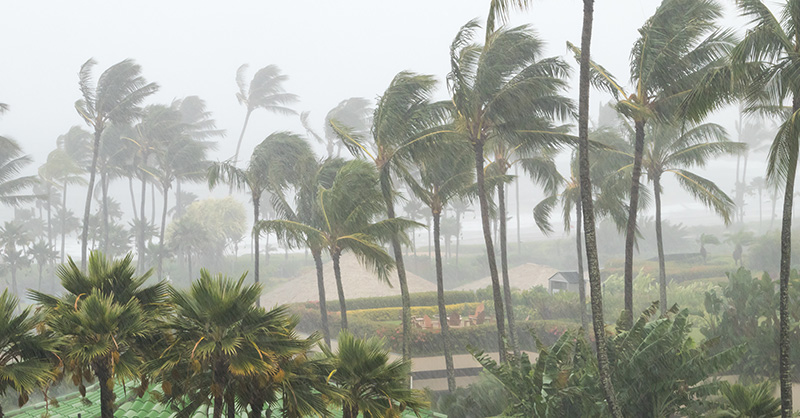Weather Trends and Loss Prevention

As we enter Spring, no one is surprised to see the return of severe weather. Traditionally, meteorologists say the severe weather season runs between March and May. In recent years, however, it seems that the window has broadened. Just this year, we’ve already seen unusual amounts of rain in California and Florida. NOAA’s National Weather Service has reported nearly 500 tornados in the first 3 months of the year.1 Volatility may continue throughout this year. Last month, NOAA declared that La Niña conditions that have prevailed for the last three years have come to an end.2 Forecasters suggest that, with the end of La Niña conditions, weather patterns in the U.S. may be more conducive to severe weather. They expect to see the continued pattern of particularly severe storms appearing in the eastern Plains, Tennessee Valley and Gulf Coast.
Changing weather patterns continue to impact reinsurers, carriers and insureds. Analysts at insurance research firm Assured Research recently studied NOAA and FEMA data sets. They concluded that while the Central states have a high frequency of weather events, most of those are convective storms with lower severity. Looking at all hazards, the states with the greatest severity are along the Western, Southern and Eastern coasts. In the graphic above, they show the ten largest states ranked by either the number of weather events or the average severity of events.
Insureds should be prepared for severe weather risks. Great American Property & Inland Marine is here to assist.
When you need to make a claim, you want to work with experts who understand your loss and what to do. That’s why our claims professionals specialize in the markets they serve and are ready to jump into action knowing each day costs clients valuable time and money. To help you avoid making a claim, we have a dedicated Loss Control team with years of experience to help protect your clients from different types of loss. From thermal imaging, various training sessions, and educational information such as our Safety Topics, our team of experts will work with you to help improve the safety and security of your operations for better risk management and potential cost savings.
Visit GAIG.com to view our Plan & Protect hub and access the library of resources, including loss control guidance specific to Tornado Safety.
More Resources
If your insureds want to better understand changing weather patterns in their area, here are some useful government sites:
- The National Weather Service’s Storm Prediction Center website publishes eight-day outlooks to help anticipate potential convective activity in an area.
- NOAA’s Storm Events Database – NOAA has built a searchable database of any storm that has been intense enough to cause loss of life, injuries, significant property damage or disruption to commerce. If you need to review storms and potential losses in your area, this is a valuable resource.
- FEMA’s National Risk Index – FEMA has worked with academia, state, local and federal government, and private industry to create a Risk Index that measures natural hazard and community risk factors for each US county and Census tract. The National Risk Index is intended to help users better understand the natural hazard risks of their communities. Users will also see how FEMA quantifies expected losses from 18 unique natural hazards.
1NOAA’s National Weather Center, Storm Prediction Center, Annual Severe Weather Report Summary 2023
2March 2023, ENSO Update, No More La Nina!
Image Source: Assured Research



